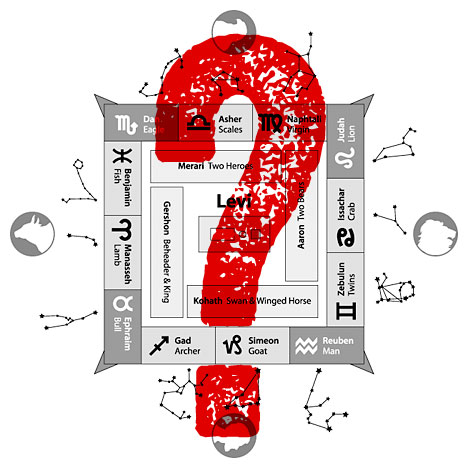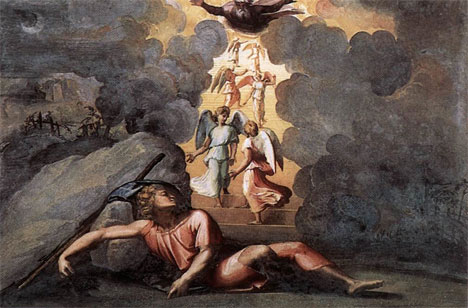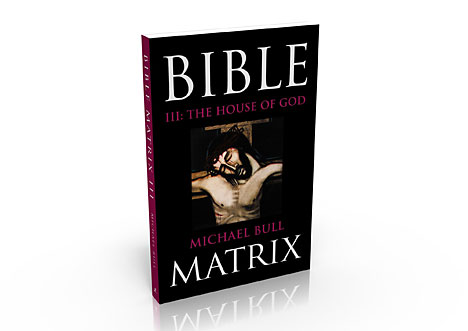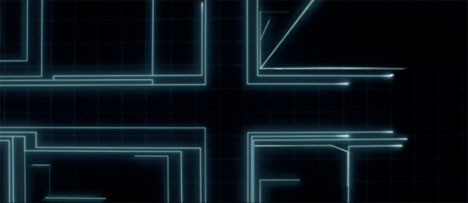Jul
19
2013

“So, perhaps the best conclusion is that John was not looking for encouragement, but giving encouragement. In effect, he was saying, ‘Get on with it, cousin!’”
The nature of the texts of the Bible is just like the spoken words God gave to Adam. A great deal remained unsaid, and Adam was to “read between the lines” based upon God’s revealed character as his Father. However, Adam let somebody else fill in the gaps with some conflicting information about God’s character, somebody who was very likely jealous of Adam’s commission and had an ax to grind (and even here, we are left to fill in the gaps as to Satan’s motive based upon later scriptures!)
Continue reading
7 comments | tags: Albert Garlando, Bible Matrix III, John the Baptist, Literary Structure, Luke, Tabernacle | posted in Bible Matrix, Biblical Theology, Q&A
Feb
11
2013
 Here’s a challenge to the twelve tribes Zodiac theory…
Here’s a challenge to the twelve tribes Zodiac theory…
I put together the chart above for Bible Matrix III based on James Jordan’s chart in his very helpful Behind the Scenes: Orientation in the Book of Revelation. Since the four kingly faces correspond to the four quadrants, it takes the Zodiac and corresponds it to the tribes in Numbers. His explanation of how the Zodiac corresponds to the tribes is very good, but the actual Zodiac seems alien to the Bible, which repeats symbols over and over, and these don’t really get repeated. It feels like a foreign body and it bugged me for days!
Continue reading
Comments Off | tags: Bible Matrix III | posted in Bible Matrix, Biblical Theology
Feb
1
2013

Another chapter from Bible Matrix III:
Continue reading
Comments Off | tags: Bible Matrix III, Jericho, Joshua, Tabernacle | posted in Bible Matrix, Biblical Theology
Jan
19
2013

An excerpt from Bible Matrix III:
Just as Esau was the line of Cain rolled into one, so Jacob was a true son of God. In fact, being blameless as Noah was, the Lord granted him a vision of the true Gate of God, a tower reaching to heaven.
In Bible Matrix, we mentioned the significance of Jacob’s “ziggurat” vision as it relates to the mountain of God. [1] Jacob was laid out on the ground like Adam. His slumber brings a “Bridal” vision.
Continue reading
Comments Off | tags: Baptism, Bible Matrix III, Cain, Esau, Genesis, Jacob, Literary Structure, Tabernacle | posted in Bible Matrix, Biblical Theology
Jan
10
2013

or Bible SatNav
The adage “A picture is worth a thousand words” refers to the notion that a complex idea can be conveyed with just a single still image. It also aptly characterizes one of the main goals of visualization, namely making it possible to absorb large amounts of data quickly. (Wikipedia)
It struck me this morning, as I read one of my regular theology blogs, that theologians don’t much use diagrams. The blog post in question used over a thousand words to describe something that is inherent in the architectures (both literary and spatial) found in the Bible.
What this means is that, for the most part, the way we communicate theology is foreign to the way our God does it.
Continue reading
Comments Off | tags: Bible Matrix III, Literary Structure, Systematic typology | posted in Against Hyperpreterism, Bible Matrix, Biblical Theology
Jan
2
2013

Here’s a chapter from Bible Matrix III. If you think this one’s just okay, rest assured that the subsequent chapters are a lot more fun — typologically speaking.
(Note: It still has some typos and the footnotes haven’t been numbered yet!)
2 comments | tags: Bible Matrix III | posted in Bible Matrix, Biblical Theology
Oct
6
2012

The Bible doesn’t set systematic theology and biblical theology in opposition, but rather employs a combination of both: systematic typology. It consistently gives us architectural spaces and fills them with things. Systematic theology provides a helpful list of similar things, and biblical theology can trace the maturation of particular ideas, but what if the text itself gave us a way of combining the two, using them as “spatial coordinates”?
Continue reading
Comments Off | tags: Bible Matrix III | posted in Bible Matrix
































